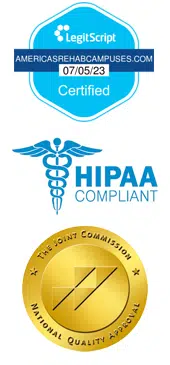
Like many painkillers, OxyContin is a prescription drug used for extended relief of pain lasting up to 12 hours at a time. It comes from oxycodone and is typically reserved for cases of severe pain due to the strength and tendency to become the target of substance abuse.
OxyContin is such a popular choice for chronic pain due to it’s long-lasting nature meaning those taking the medication will be able to do so less frequently throughout the day and be able to enjoy their usual activities free of pain. Unfortunately, this is the same reason that so many turn to OxyContin for illicit drug use.
Abusing OxyContin, either without a prescription or on a more frequent basis than recommended, can have negative impacts on your body. Over time, your body will build up a tolerance to the medication meaning you’ll need more and more in order to achieve the same effects. Dependencies also develop during extended abuse of the drug leading to OxyContin withdrawal symptoms when you no longer have access to it.
Understanding OxyContin Withdrawal Symptoms
OxyContin withdrawal symptoms will vary in severity and length depending on how long it has been abused as well as the amount and frequency of doses. Given the desirable effects of OxyContin, it’s extremely likely to develop an addiction to the drug.
The acute OxyContin withdrawal symptoms will last for the first one to two weeks after your last dose. Not everyone will experience the same symptoms but the most common ones to experience this early are:
- Insomnia
- Muscle aches and cramps
- Anxiety
- Sweating
- Chills
- Fever
- Irritability
- Flu-like symptoms such as congestion
The next wave of OxyContin withdrawal symptoms can start soon after the first but last longer and often present themselves as:
- Blurred vision
- Diarrhea
- Nausea and/or vomiting
- Smaller appetite
- Increased heart rate and blood pressure
Something to note regarding OxyContin withdrawal symptoms is that they aren’t as life-threatening as some other substances such as alcohol which can lead to seizures. The danger in OxyContin detox is that when done alone, there is an extremely high probability of relapse. As such, it’s highly recommended to undergo medically-assisted detox to completely remove the option while you work towards recovery.
Timeline for OxyContin Withdrawal Symptoms
Withdrawal symptoms for any substance will begin based on the substance’s half-life or the amount of time it takes for the presence of the substance to reduce by half. In the case of OxyContin, the primary ingredient oxycodone has a half-life of only four hours meaning OxyContin withdrawal symptoms can start as early as four hours after your last dose.
The later symptoms listed above don’t begin until approximately 24 hours the most recent use and can seem like a severe flu or cold. Thankfully most of the withdrawal symptoms will subside within a few days but some individuals may experience them for up to two weeks.
Some of the factors that can impact the timeline of OxyContin withdrawal symptoms include:
- Amount of OxyContin per dose
- Whether it was instant or extended release
- How long the drug has been abused
- Personal health and dispositions
- If other drugs were used in conjunction with OxyContin
Tackling OxyContin Withdrawal Symptoms With Medication
Whether you or someone you love are looking to remove OxyContin from your life, it’s vital to understand that there are detox and treatment options that can make the process more comfortable. It can also increase chances of remaining drug-free even after treatment.
Inpatient programs allow you to remove yourself from situations in your life where OxyContin is either heavily used or easily obtainable. Medically-assisted detox is conducted with medical professionals watching over you to provide both physical and mental health assistance. When you attempt to detox on your own, even the smallest stressors in your environment can be enough to make you turn back to OxyContin.
Medications such as methadone and buprenorphine can be used to reduce or completely remove OxyContin withdrawal symptoms. They trigger the same receptors as oxycodone without the more addictive properties. This allows you to gently taper off of OxyContin and avoid a large portion of withdrawal symptoms.
While those medications help with the physical symptoms, the impact to your psychological state still needs to be addressed. Mental health professionals commonly turn to a medication called clonidine which tackles a bevvy of symptoms including:
- Sweating
- Congestion
- Fever
- Muscle cramps
- Anxiety
- Irritability
It’s never too early or too late to seek treatment for opioid abuse. Having the option to alleviate OxyContin withdrawal symptoms can make a drug-free future much easier to achieve. Treatment from America’s Rehab Campuses also comes with comprehensive after-care resources to give you the tools needed to overcome future cravings and impulses.
It all starts with a free, confidential consultation so please don’t hesitate to take the first step today.

